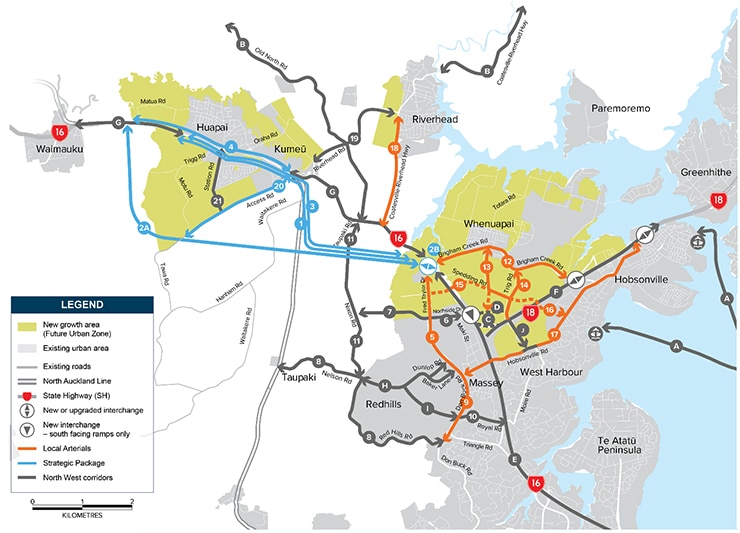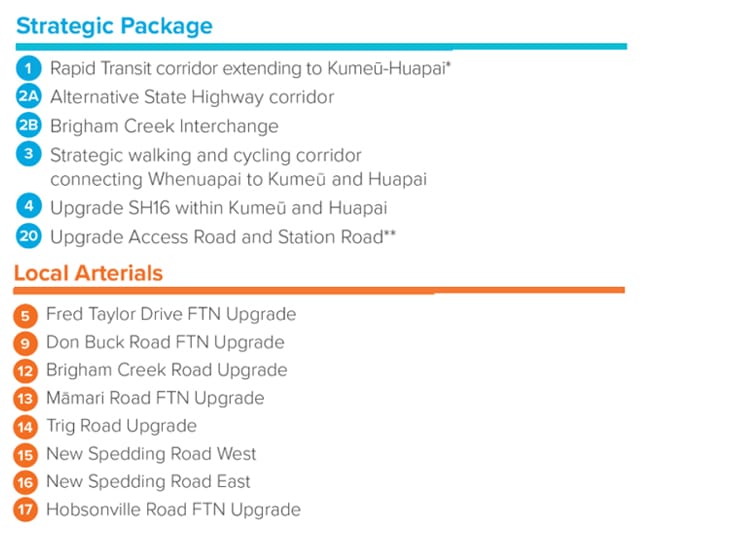Written by Kaaren Joubert | Planning Manager | Cato Bolam Consultants
A ‘Notice of Requirement’ (“NoR”) is a notice lodged with a District Council to designate an area of land for a particular purpose, including such things as roads, schools, electricity , telecommunications and other public utility infrastructure. Once lodged, NoRs follow a process outlined in the RMA, which often begins with public notification and the opportunity for affected parties to lodge submissions.
NoRs can only be lodged by a ‘Requiring Authority’. The list of requiring authorities includes entities such as Auckland Council, Auckland Transport (“AT”), Vector, Ministry for Education and Waka Kotahi (New Zealand Transport Agency) (“NZTA”).
Auckland Council has recently given notice of several NoRs. These NoRs are at various stages of the Designation process and relate to Te Tupu Ngātahi Supporting Growth Programme (“SGP”). The Supporting Growth Alliance is a collaboration between AT and NZTA (as requiring authorities) to plan transport investment in Auckland’s Future Urban Zone (“FUZ”) areas over the next 10 to 30 years. AT and NZTA have partnered with Auckland Council, Manawhenua and KiwiRail Holdings Limited (“KiwiRail”) and are working closely with stakeholders and the community to develop the strategic transport network to support Auckland’s growth areas. The key objective of SGP is to protect land for future implementation of the required strategic transport corridors/infrastructure. As a form of route protection, these Designations will identify and appropriately protect the land necessary to enable the future construction, operation and maintenance of these required transport corridors /-infrastructure. A Designation provides increased certainty for the Requiring Authority that it can implement the work. It also provides property owners, businesses and the community with increased certainty regarding future infrastructure, so they can make informed decisions. It can also significantly reduce long-term costs for local and central government and enable more effective land use and transport outcomes.

As in the case of SGP, a NoR often relates to privately owned land. While the actual physical works cannot start until approval is granted for the Designation, from the time the NoR is lodged a landowner affected by the NoR is not able to do anything that would prevent or hinder the works proposed without the written approval of the Requiring Authority.
The RMA sets out a prescribed process for putting a Designation in place.
The submission process for a NoR is similar to that of notified resource consent applications – a special form is used, and submitters may attend a hearing with any legal and / or expert advice they may wish to engage.
The decision-making process is, however, quite different to a resource consent application. There are set criteria in the RMA for the consideration of NoRs. The Council-appointed panel that hears submissions can then only make recommendations back to the Requiring Authority. It is the Requiring Authority that decides whether to accept the recommendations and they make the final decision.
The Council and any submitter(s) may appeal a decision by the Requiring Authority to the Environment Court. Decisions made by the Environment Court can only be appealed to the High Court on points of law.

Once in place, Designations appear as a separate layer in the district plan and allow a Requiring Authority to carry out work and use of the designated site or route without the need for a land use consent from the Council and without complying with any rules in the district plan (regional rules must still be complied with).
A landowner who is affected by a Designation is entitled to compensation as part of another process which is set out in the Public Works Act, 1981 (PWA). Important principles of the PWA are to ensure that landowners receive fair compensation, and that they are left in a no better or worse position afterwards, than they were before the public work commenced. Under the PWS, the land can be acquired by the Requiring Authority by agreement with the landowner based on fair compensation. Compensation is determined on the basis of expected market value by a willing seller to a willing buyer on a specific date. Valuation report(s) from a registered valuer(s) determines the market value. Normally the Requiring Authority will agree to pay reasonable fees for the valuation report(s). Should the parties not agree on the compensation payable, the amount can be determined by the Land Valuation Tribunal. Where agreement on compensation cannot be reached between the parties after reasonable effort of good faith negotiation, the PWA enables the Requiring Authority to acquire privately owned land without agreement. This is called “compulsory acquisition”. Even if private land is acquired using the compulsory acquisition process, the landowner will still receive compensation.
Cato Bolam’s planning team have the expertise to provide advice on NoRs and Designations. Please contact Kaaren Joubert, our Planning Manager, via [email protected] in the first instance.
Or get in touch with our team using the contact button below.

